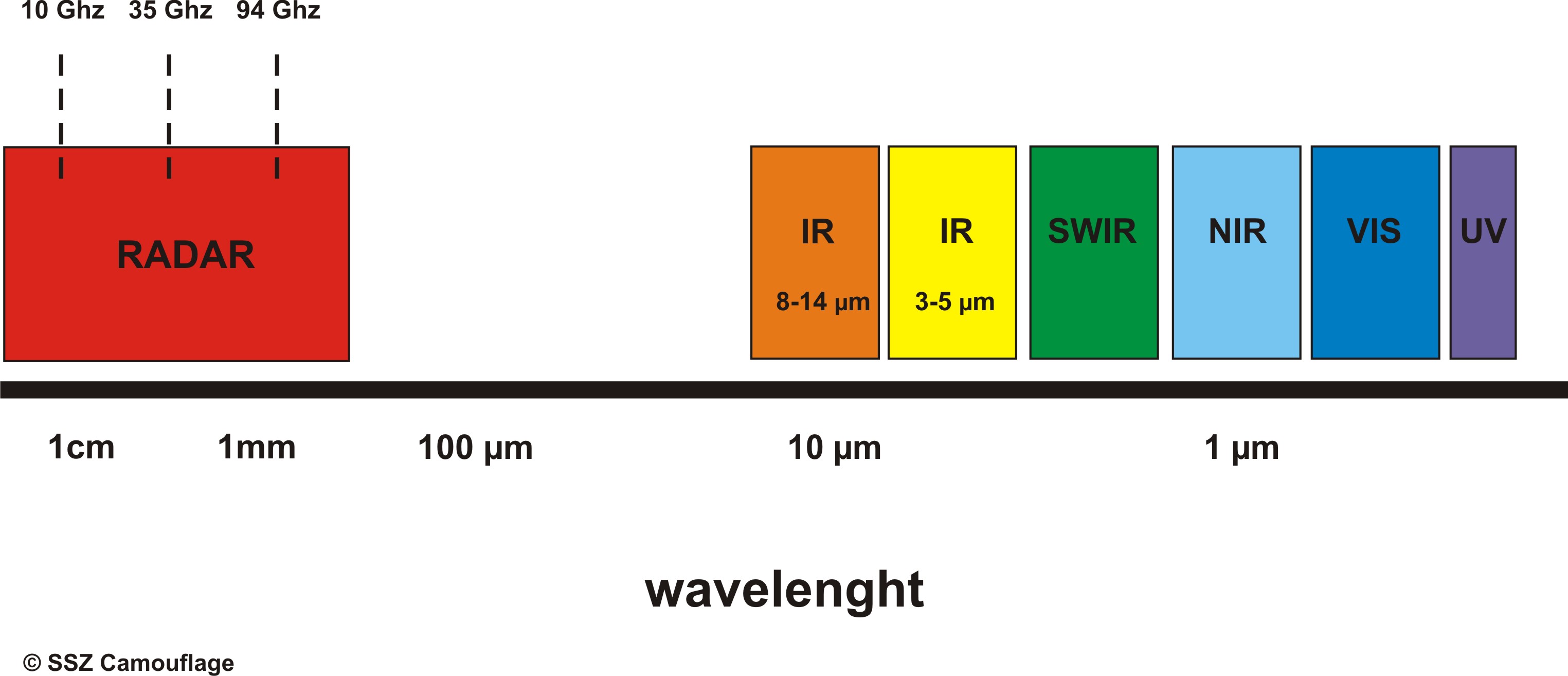What does camouflage mean?
Efficient camouflage means blurring the characteristic contours of an object so that the object as such can no longer be perceived against its background. Nowadays, this principle can be implemented in all relevant spectral ranges (VIS, NIR, MIR, SWIR and RADAR).
What does signature mean?
Generally, an object’s characteristic signature is understood as a set of data that enables clear detection and/or identification of the object. For example it is possible to determine from the signature whether the object in question is an ordinary vehicle or an armoured car. In addition it is also possible to identify the type of object, e.g. the type of vehicle or armoured car. In the five spectral ranges mentioned earlier, i.e. VIS, NIR, MIR, SWIR and RADAR, the characteristic signature consists of different measured variables:
- in the visual range: colours and shape of the object
- in near and shortwave infrared: spectral reflectivity and shape
- in the thermal infrared: characteristic shape and arrangement of warm or hot parts of the object
- in the radar range: the characteristic spatial or angular distribution of the reflected radar signal
What are spectral ranges?
Nowadays, any spectral range for which the earth’s atmosphere is in any way transparent is used. These transparent ranges or “atmospheric windows” include visual (VIS), near infrared (NIR) and shortwave infrared (SWIR) ranges, thermal infrared ranges from 3-5 µm and 8-14 µm wavelength (MIR) and microwaves and radar (RADAR) ranges. Electromagnetic radiation that does not fit any of these ranges is absorbed by air molecules, i.e. in those intermediate ranges the atmosphere is opaque. Of the types of radiation mentioned, only radiation in the visual range is perceived by the human eye. All other types of radiation are invisible.

